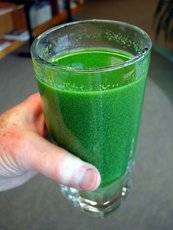Microcystis: Difference between revisions
imported>Yera Patel |
imported>Yera Patel |
||
| Line 2: | Line 2: | ||
Microcystis Aeruginosa is a type of harmful blue-green algae which is also referred to as cyanobacteria. They say that the walls of the bacteria are stained gram positive but the cells appear gram negative. This species is colonial, which means that single cells can join together in groups as colonies which tend to float near the water surface. Colony sizes will vary from a few to hundreds of cells. It is a common bloom-forming algae found primarily in nutrient enriched fresh waters and lower salinity estuaries. Microcystis aeruginosa is one of more than 700 species of algae that may be found in water samples collected and usually blooms in mid to late summer. | Microcystis Aeruginosa is a type of harmful blue-green algae which is also referred to as cyanobacteria. They say that the walls of the bacteria are stained gram positive but the cells appear gram negative. This species is colonial, which means that single cells can join together in groups as colonies which tend to float near the water surface. Colony sizes will vary from a few to hundreds of cells. It is a common bloom-forming algae found primarily in nutrient enriched fresh waters and lower salinity estuaries. Microcystis aeruginosa is one of more than 700 species of algae that may be found in water samples collected and usually blooms in mid to late summer. | ||
== Appearance == | |||
Microcystis becomes very noticeable during bloom events. Thick mats of the algae can coat the water so heavily that you cannot see your hand an inch below the surface. In calm, fresh water areas, it may look like someone spilled green paint on the surface. On closer inspection, the mats can be seen to be comprised of small flakes or balls. If the algae is blown by the wind or pushed by currents into higher salinity waters where it cannot survive, it generally takes on a greenish-yellow color and a chunky appearance as it dies. | |||
[[Image:cup.jpg]] | |||
Revision as of 20:05, 15 April 2008
What is Microcystis?
Microcystis Aeruginosa is a type of harmful blue-green algae which is also referred to as cyanobacteria. They say that the walls of the bacteria are stained gram positive but the cells appear gram negative. This species is colonial, which means that single cells can join together in groups as colonies which tend to float near the water surface. Colony sizes will vary from a few to hundreds of cells. It is a common bloom-forming algae found primarily in nutrient enriched fresh waters and lower salinity estuaries. Microcystis aeruginosa is one of more than 700 species of algae that may be found in water samples collected and usually blooms in mid to late summer.
Appearance
Microcystis becomes very noticeable during bloom events. Thick mats of the algae can coat the water so heavily that you cannot see your hand an inch below the surface. In calm, fresh water areas, it may look like someone spilled green paint on the surface. On closer inspection, the mats can be seen to be comprised of small flakes or balls. If the algae is blown by the wind or pushed by currents into higher salinity waters where it cannot survive, it generally takes on a greenish-yellow color and a chunky appearance as it dies.
